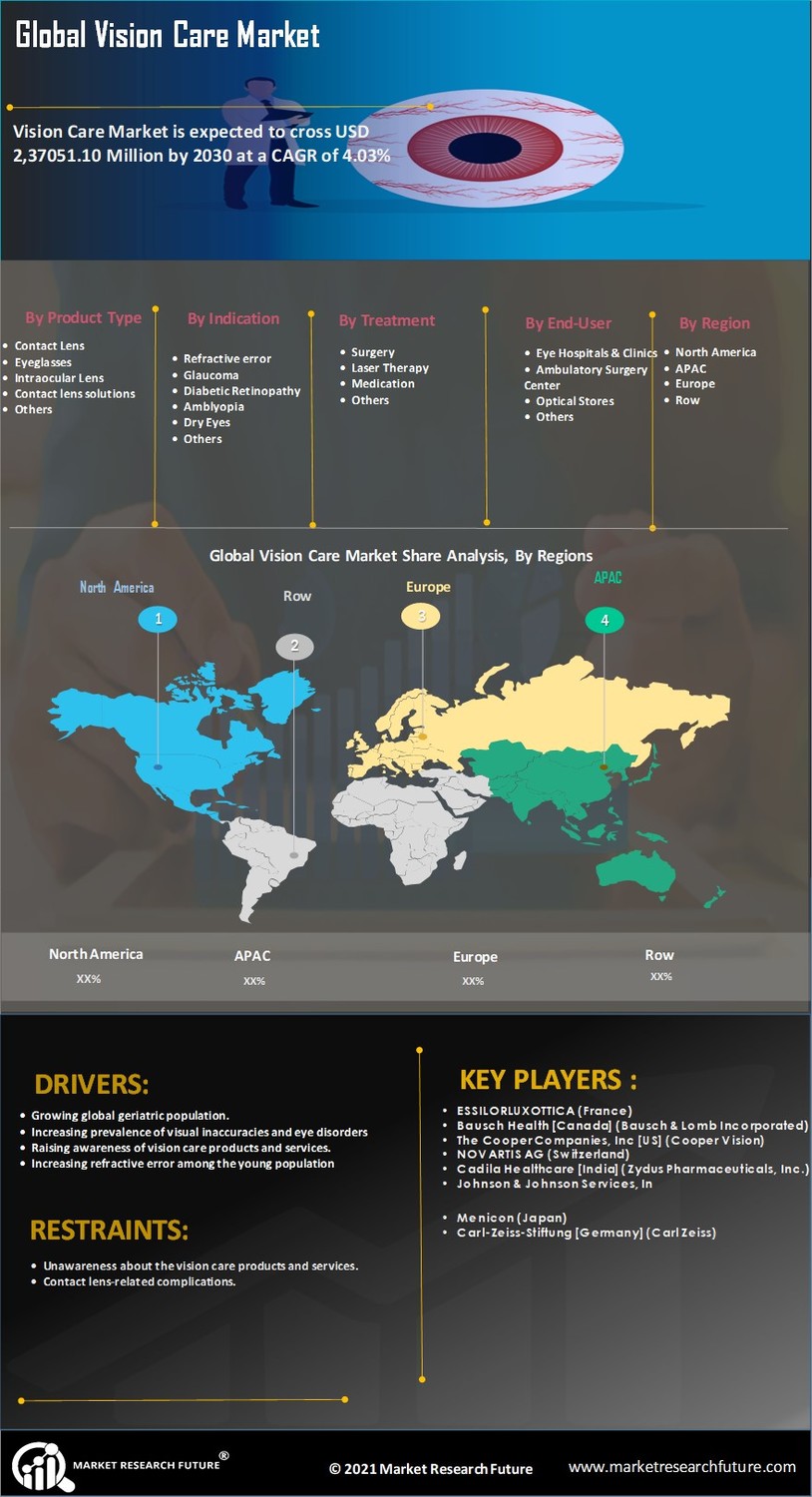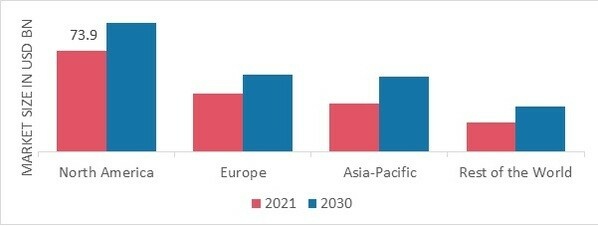Market Growth Projections
The Global Vision Care Market Industry is projected to experience substantial growth over the coming years. With a market value of 184.8 USD Billion in 2024, it is anticipated to reach 270.0 USD Billion by 2035. This growth trajectory reflects a compound annual growth rate of 3.51% from 2025 to 2035. Factors such as the increasing prevalence of vision disorders, technological advancements, and rising awareness of eye health are expected to drive this expansion. The market's evolution will likely be influenced by demographic shifts and changing consumer preferences, indicating a dynamic landscape for vision care products and services.
Rising Awareness of Eye Health
Growing awareness regarding the importance of eye health is significantly influencing the Global Vision Care Market Industry. Public health campaigns and educational initiatives are increasingly emphasizing the need for regular eye examinations and proper vision care. This heightened awareness is prompting individuals to seek professional eye care services and invest in corrective eyewear. Furthermore, as consumers become more informed about the potential consequences of neglecting eye health, the demand for vision care products is expected to rise. This trend is particularly relevant in emerging markets, where awareness campaigns are gaining traction. Consequently, the Global Vision Care Market Industry is likely to experience robust growth as more individuals prioritize their eye health.
Growth of E-commerce in Vision Care
The expansion of e-commerce platforms is transforming the Global Vision Care Market Industry by providing consumers with convenient access to vision care products. Online retailing offers a wide range of eyewear options, often at competitive prices, which appeals to a broader audience. This shift towards online shopping is particularly pronounced among younger consumers who prefer the convenience of purchasing eyewear from home. E-commerce also facilitates the availability of specialized products that may not be readily accessible in traditional brick-and-mortar stores. As a result, the Global Vision Care Market Industry is likely to benefit from this trend, as e-commerce continues to gain traction, contributing to overall market growth.
Aging Population and Lifestyle Changes
The demographic shift towards an aging population is a significant factor driving the Global Vision Care Market Industry. As individuals age, they are more prone to developing vision-related issues, thereby increasing the demand for vision care services and products. Additionally, lifestyle changes, such as increased screen time and urbanization, contribute to a rise in vision problems among younger populations. These factors create a dual demand for both corrective lenses and preventive care solutions. The combination of an aging demographic and evolving lifestyle habits suggests that the Global Vision Care Market Industry will continue to expand, with projections indicating a market value of 184.8 USD Billion in 2024, escalating to 270.0 USD Billion by 2035.
Increasing Prevalence of Vision Disorders
The rising incidence of vision disorders globally is a primary driver of the Global Vision Care Market Industry. Conditions such as myopia, hyperopia, and presbyopia are becoming increasingly common, particularly among aging populations. According to estimates, the number of individuals affected by these disorders is projected to rise significantly, contributing to the demand for vision care products and services. This trend is particularly evident in regions with rapidly aging demographics, where the need for corrective lenses and other vision aids is expected to surge. As a result, the Global Vision Care Market Industry is likely to see substantial growth, with a projected value of 184.8 USD Billion in 2024 and an anticipated increase to 270.0 USD Billion by 2035.
Technological Advancements in Vision Care
Technological innovations play a crucial role in shaping the Global Vision Care Market Industry. Advancements in diagnostic tools, treatment methods, and vision correction technologies are enhancing the effectiveness and accessibility of vision care. For instance, the introduction of advanced imaging techniques and laser surgery options has revolutionized the way eye conditions are diagnosed and treated. These innovations not only improve patient outcomes but also drive market growth by attracting consumers seeking the latest solutions for their vision problems. As the industry continues to evolve with new technologies, the Global Vision Care Market Industry is poised for sustained expansion, reflecting a compound annual growth rate of 3.51% from 2025 to 2035.















Leave a Comment